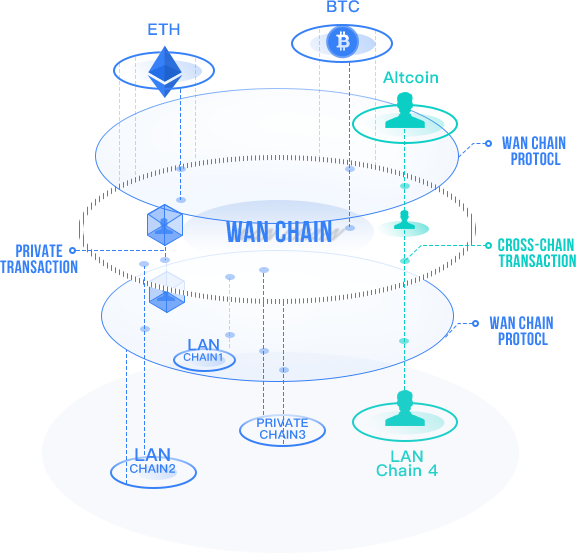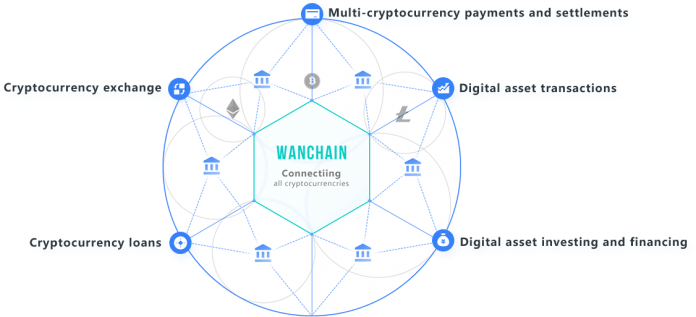Wanchain, a public blockchain project by Chinese firm Wanglu Tech, is building a distributed financial infrastructure on the Ethereum network that allows for the exchange of assets among different blockchain networks. The initiative aims to enable more organizations to easily develop their own services and innovate in the “distributed finance space.”
Wanchain seeks to become the backbone of a new, distributed financial system and intends to establish “an improved, modern framework.” The platform will act as a “distributed financial market” where any organization or individual can develop and provide their own financial services on the network.
Connecting different blockchain networks
According to its whitepaper released today, any blockchain network, whether a public, private or consortium chain, will be able to integrate with Wanchain to establish connections between different blockchains and perform low-cost inter-ledger asset transfers. The asset transfer is achieved through a decentralized cross-chain mechanism and a universal cross-chain protocol.
In addition to acting as a connector and enabling the trading of multiple digital assets, Wanchain will also be a distributed ledger with Turing completeness and smart contract functionalities.

Bo Shen, a partner at Fenbushi, said:
“Wanchain addresses issues associated with inter-connections between blockchains while serving as a super financial market in the new digital economy.”
Possible applications of Wanchain range from cryptocurrency exchanges, loans, to investment and crowdfunding.
The design and development of Wanchain was led by Jack Lu, CEO of Wanglu Tech, and co-founder and former CTO of Factom. The platform is set to go live in November this year.
Wanchain is one amongst the many projects that aim to solve the interoperability issue in the blockchain industry. One of these projects is Cosmos, a network and a framework for interoperability between blockchains. The Cosmos network consists of many independent, parallel blockchains, which are connected to each other with the help of a Cosmos Hub. Another project is Blocknet, the self-proclaimed “Internet of blockchains.” Blocknet is a general-purpose infrastructure for inter-blockchain services.














